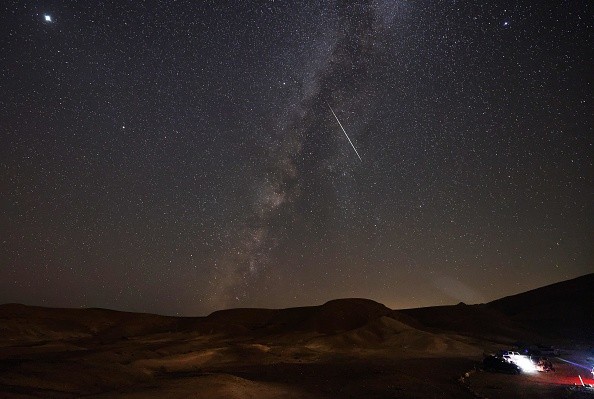As the year 2022 approaches, the sky above numerous villages in Pennsylvania was illuminated by the fireworks for the celebration of New Year's Eve. The following day, people in western Pennsylvania experienced an unexpected event - a tremendous boom and shaking.

Unexpected Flash Over Pennsylvania
People in western Pennsylvania felt a tremendous boom and shaking at 11:26am on New Year's Day. There were several reports of a "loud boom, shaking in the South Hills" in Allegheny County, according to authorities.
However, the USGS recorded no seismic activity, and there was no lightning or thunder in the area, according to Weather Boy.
National Weather Service forecasters in Pittsburgh, Pennsylvania, think a meteor may have exploded and sent a bright flash and loud boom into the sky above the state.
After analysing data from the GOES weather satellite, the National Weather Service came up with their own explanation.
The GOES-16 weather satellite, commonly known as GOES-East, delivers a GLM Total Optical Energy product in addition to providing cloud pictures and other useful meteorological data. This device saw a flash of light in the sky that was not connected to any thunderstorms.
"The loud explosion heard over SW PA earlier may have been a meteor explosion...No confirmation, but this is the most likely explanation at this time." the Pittsburgh National Weather Service wrote on Twitter. There's no way to know for sure, but this seems to be the most probable scenario right now.
There were a number of people who tweeted footage and audio from their home security systems, capturing the thunderous "boom" sound that came from the skies above.
Could This Event be an Airburst?
There is a chance this meteor explosion event is an "airburst". When an anti-personnel artillery shell or a nuclear bomb is detonated in the air rather than when it makes direct impact with the ground or a target, it is known as a "airburst."
The same thing may happen if a meteor flies into the Earth's atmosphere and blows up. Some airbursts may do severe damage to the earth and knock down trees, blow out windows, or even cause structural damage, depending on how near they occur to the ground and/or how huge the meteor initially was.
Meteorite impacts have varying consequences depending on the impactor's composition and trajectory.
Asteroid impact velocities of several kilometres per second (km/s) are common for huge asteroids (>200 m for rocky composition, >50 m for iron composition) that have a substantial impact energy and negligible deceleration by the atmosphere.
There are a few different ways in which smaller things may be impacted, depending on their composition (iron or rock) and the amount of energy they have. For example, a crater can develop, or a scattered field of smaller ones can be created.

Consequences of Meteorite Impacts
When a tiny asteroid comes within striking distance of Earth, there may be just a brief window of opportunity to assess the possible repercussions.
Complicated computer model simulations of these effect scenarios are computationally and logically demanding. High-performance computer simulations might take weeks or months to complete.
If time is of the essence, then other means of initiating mitigation actions must be considered. This may be done in a few minutes using basic estimations and pre-processed simulations of possible impact scenarios in a database. This project's ultimate objective is the creation of such a database.
For more news, updates about meteors and similar topics don't forget to follow Nature World News!
© 2025 NatureWorldNews.com All rights reserved. Do not reproduce without permission.





